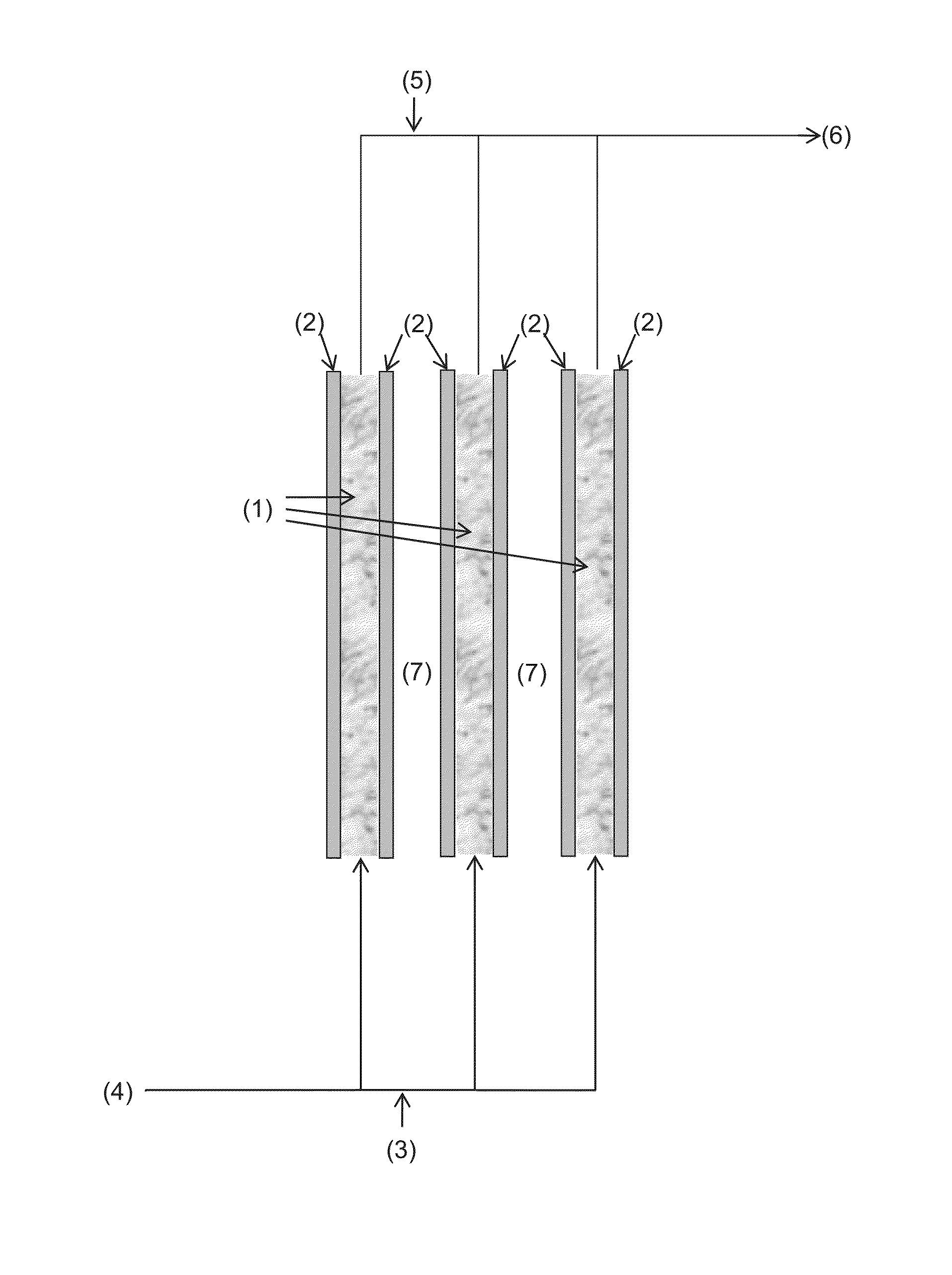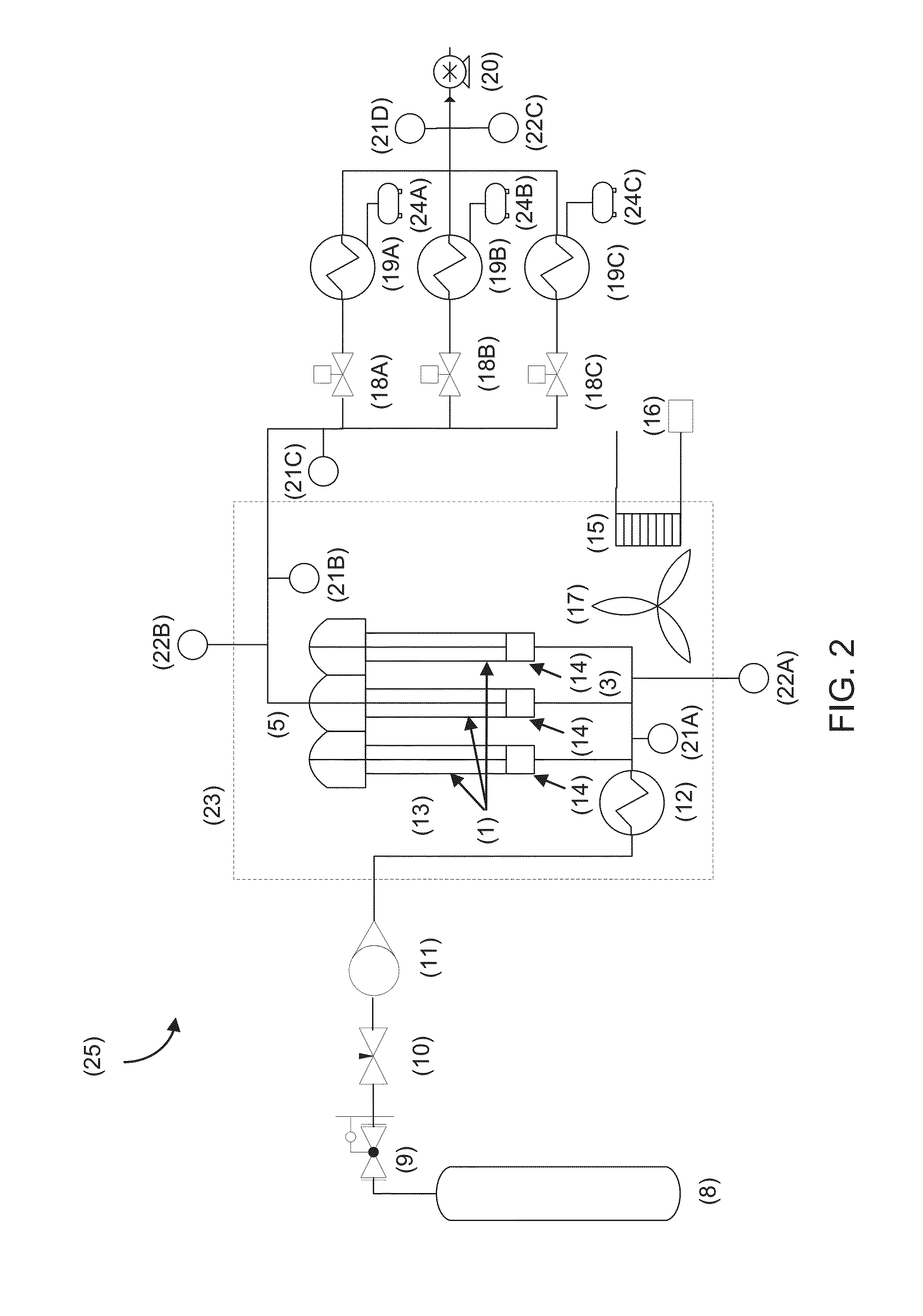Thermal Fractionation Of Plant Material
a technology of plant material and thermal fractionation, which is applied in the direction of solvent extraction, plant/algae/fungi/lichens ingredients, separation processes, etc., can solve the problems of human health, poor selectivity of solvents to target range of chemical compounds, and inability to predict the long-term effects of solvents on human health
- Summary
- Abstract
- Description
- Claims
- Application Information
AI Technical Summary
Benefits of technology
Problems solved by technology
Method used
Image
Examples
example 1
[0028]A complete cannabis Sativa plant is harvested and macerated to produce an average particle size of 3 mm. The plant material is charged into a plate heat exchanger (13) with a channel dimension of 15 mm. A nitrogen flow with a Gas Hourly Space Velocity (GHSV) of 60 hr−1 enters the bottom of the channel (1). The system is completely purged of oxygen. The heating system (15, 16, 17) ramps the temperature in the oven (23) from ambient to 100° C. preferably, but not necessarily, at 5° C. per minute. The oven temperature is held at 100° C. for around one hour or until the plant material is completely dried. The steam produced exits the top of the thermal distillation unit (13) and flows into a water cooled condenser, such as but not limited to the condenser (19C). The condenser cooling water temperature for the drying stage is around 20-25° C. The steam condenses within the condenser (19C) and flows into a corresponding water collection pot, such as but not limited to the collector ...
example 2
[0030]The test described in Example 1 was repeated with the whole system being held under a vacuum and an operational pressure of 0.05 bar. The temperature of each cut is reduced by 50° C. The system operates in a similar manner and each cut contains essentially the same components. A higher content of the acid form of CBD and THC is found within the sample due to a lower rate of decarboxylation occurring at the lower temperatures.
example 3
[0031]The test described in Example 1 was repeated with carbon dioxide being used as the sweeper gas. The system operates in a similar manner and each cut contains essentially the same components. A higher content of the acid form of CBD and THC is found within the sample due to a lower rate of decarboxylation occurring due to the presence of carbon dioxide.
PUM
| Property | Measurement | Unit |
|---|---|---|
| Temperature | aaaaa | aaaaa |
| Temperature | aaaaa | aaaaa |
| Temperature | aaaaa | aaaaa |
Abstract
Description
Claims
Application Information
 Login to View More
Login to View More - R&D
- Intellectual Property
- Life Sciences
- Materials
- Tech Scout
- Unparalleled Data Quality
- Higher Quality Content
- 60% Fewer Hallucinations
Browse by: Latest US Patents, China's latest patents, Technical Efficacy Thesaurus, Application Domain, Technology Topic, Popular Technical Reports.
© 2025 PatSnap. All rights reserved.Legal|Privacy policy|Modern Slavery Act Transparency Statement|Sitemap|About US| Contact US: help@patsnap.com



